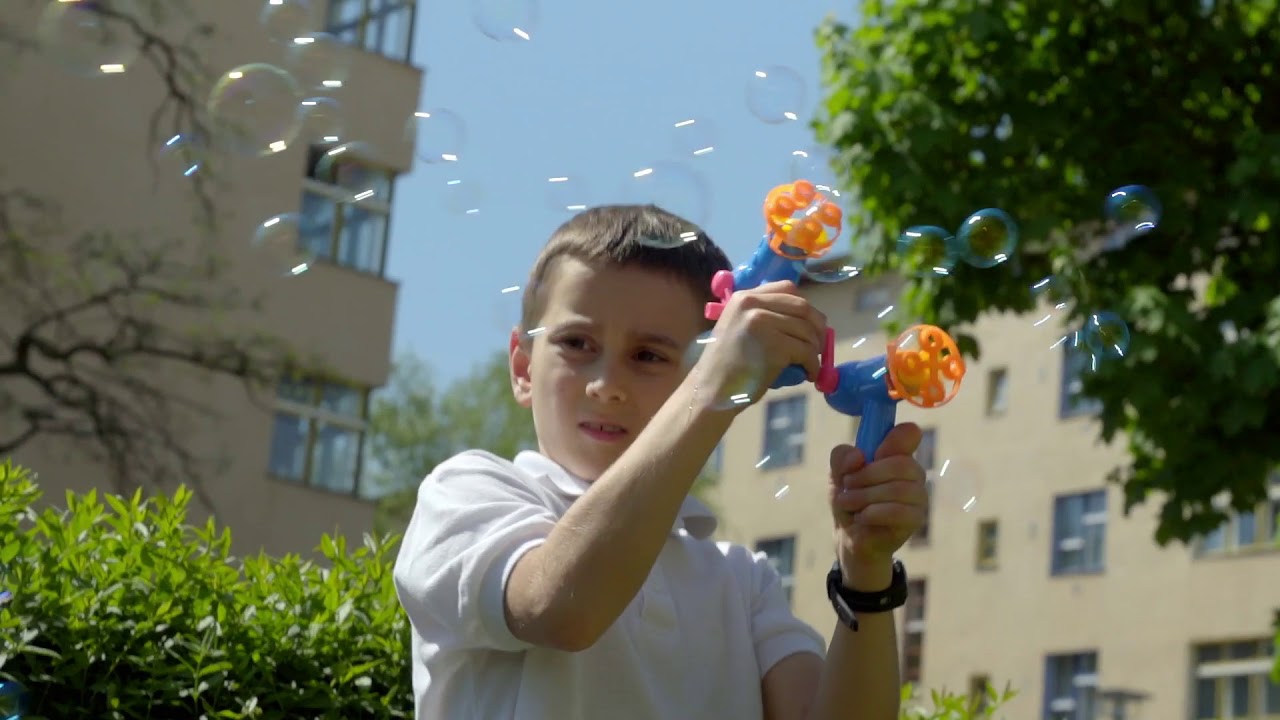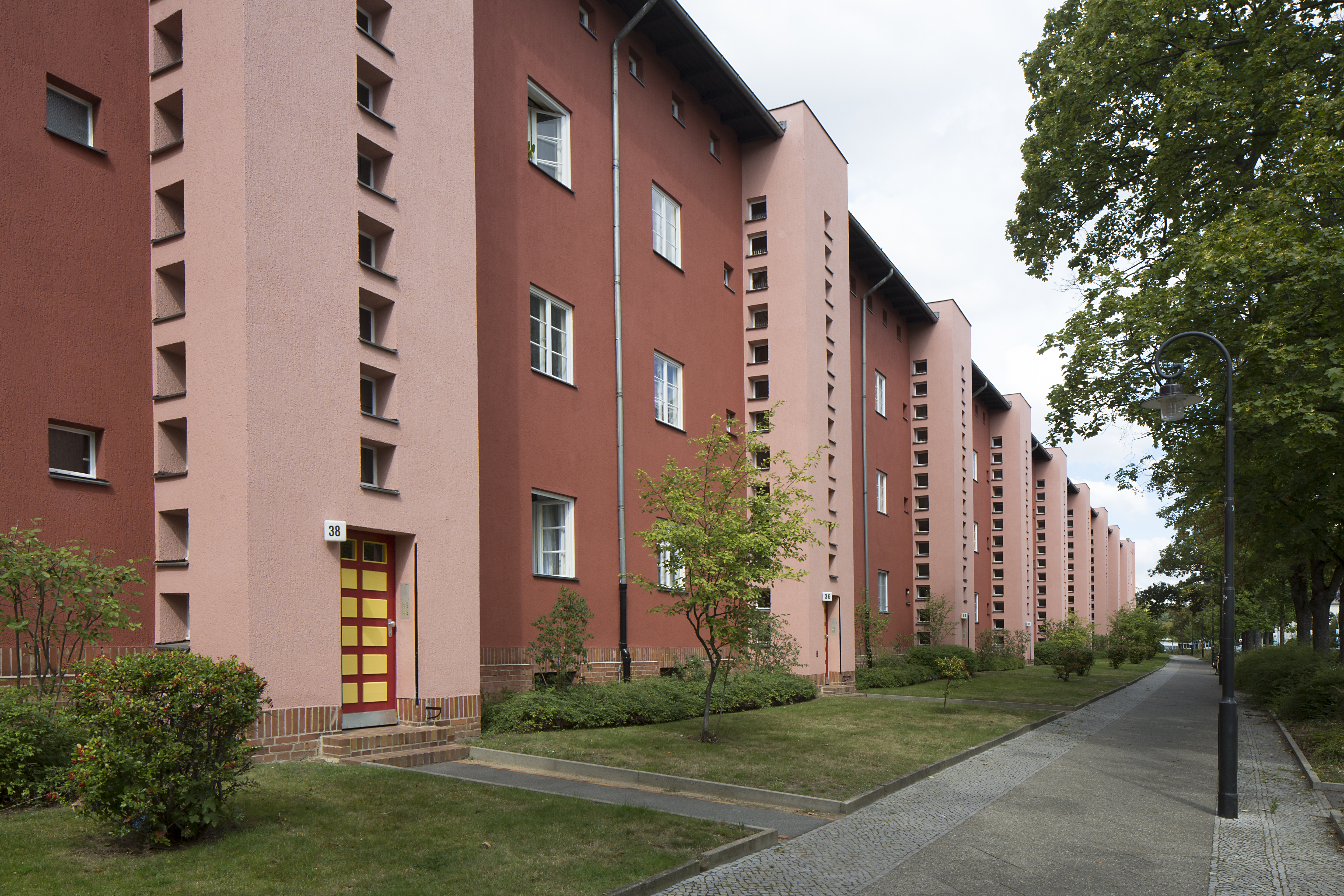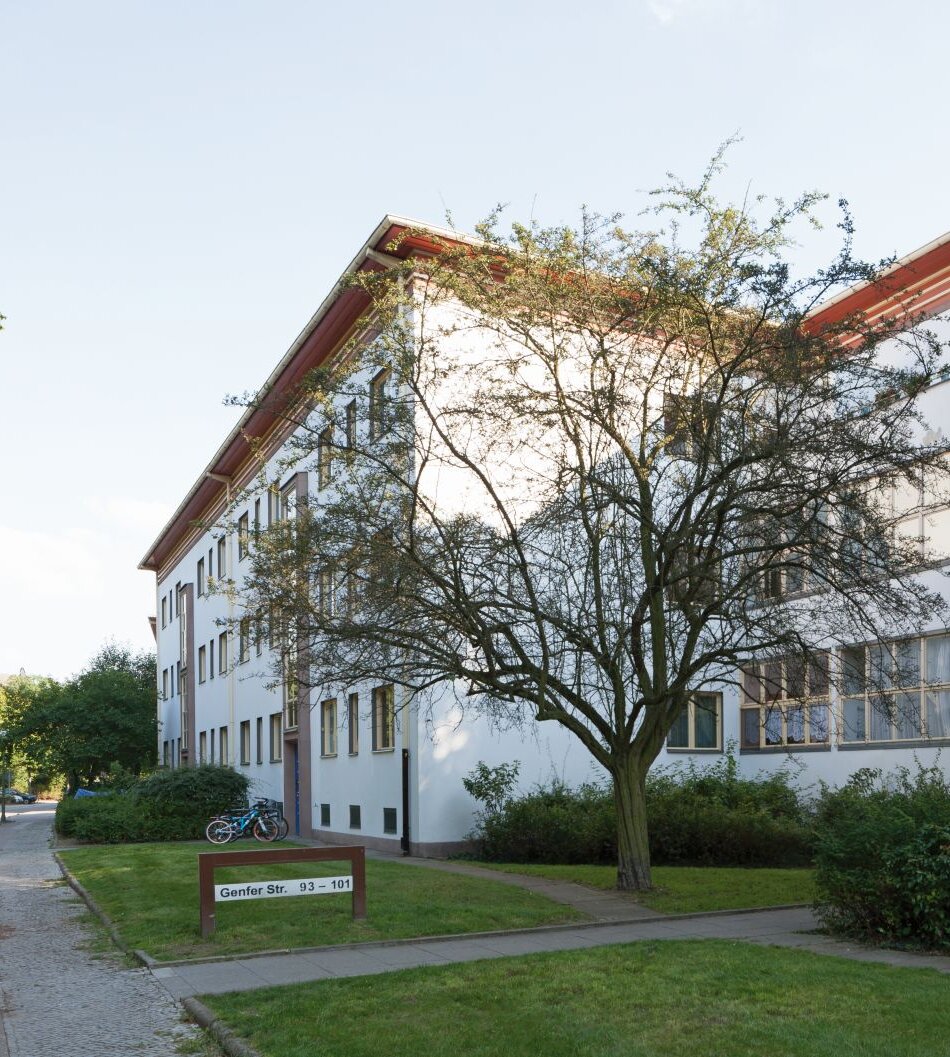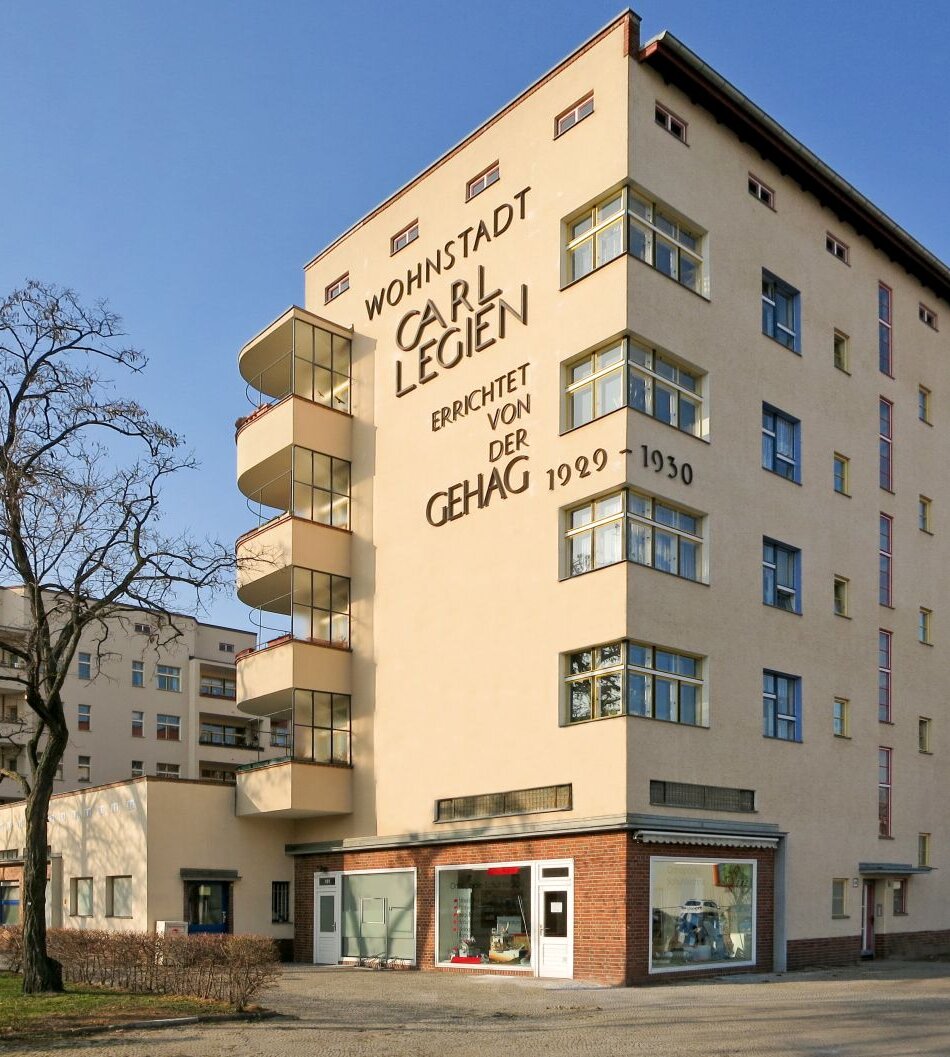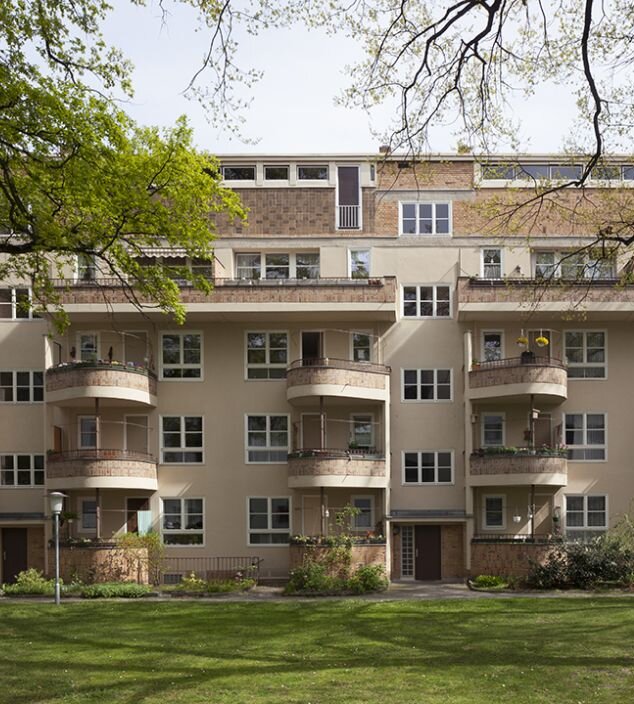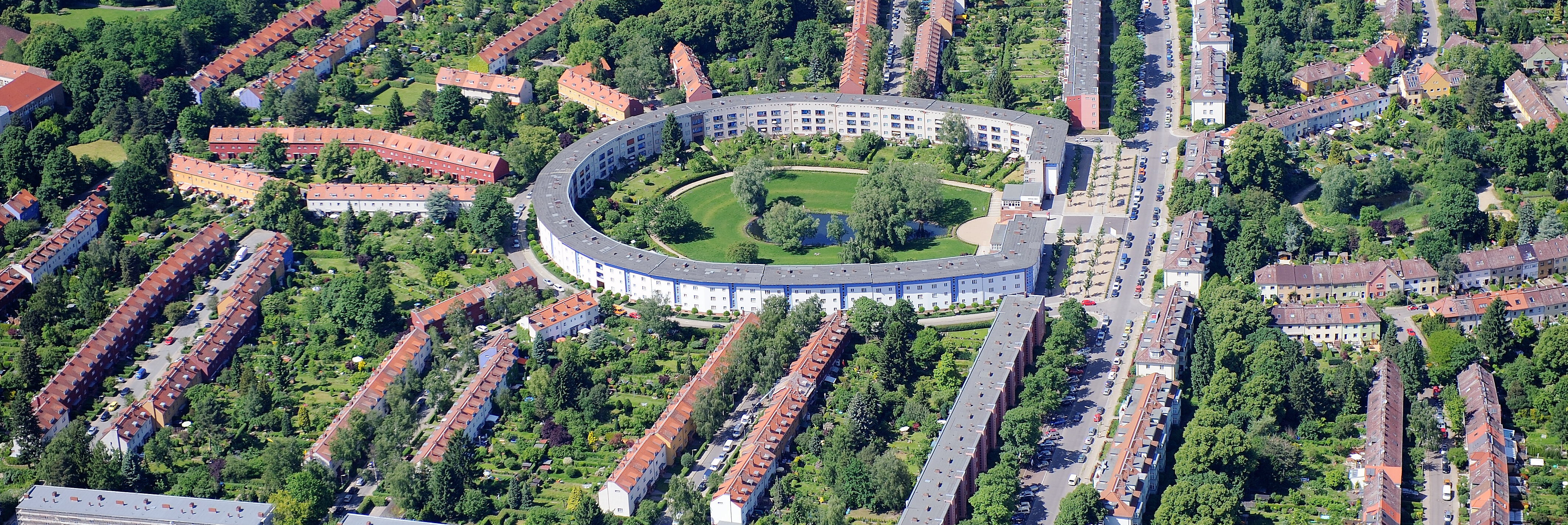
Living in a UNESCO World Heritage Site
Six Berlin housing estates were made UNESCO World Heritage Sites in 2008. Four of these Estates of Berlin Modernism (Siedlungen der Berliner Moderne) are owned by Deutsche Wohnen. The purpose of these world-famous architectural marvels, built in the 1920s and 1930s, was to meet the needs of the people who lived in them. They were designed to offer flexible solutions, built to last. That’s why they still work today.
Groundbreaking architecture
The Horseshoe Estate in Neukölln, the Weisse Stadt in Reinickendorf, the Carl Legien Estate in Pankow and the Siemensstadt Ring Estate in Spandau – Deutsche Wohnen’s four UNESCO World Heritage estates are hugely influential feats of architecture and urban planning. With these estates, classical modernist architects including Bruno Taut, Walter Gropius, Otto Bartning and Hugo Häring reacted to the housing crisis following the First World War in a style at the pinnacle of architecture. They created modern, affordable flats with kitchens, bathrooms and balconies, terraced houses with their own gardens, and apartment buildings that dispensed with dark backyards and wings, opening up to light, air and sun instead.
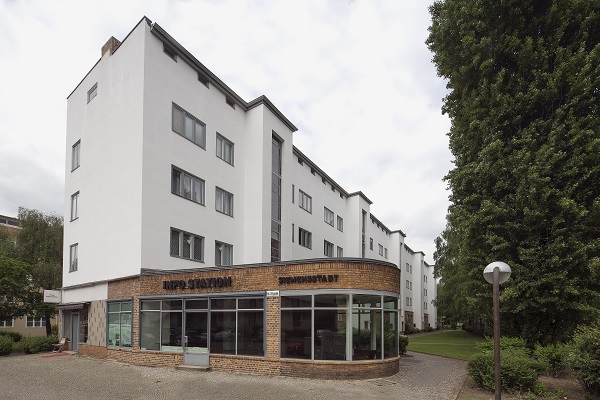
Want to know more?
What’s it like living in a World Heritage Site? Discover our UNESCO estates and the people who live there. Join a guided tour or visit our information stations on the Horseshoe Estate and the Siemensstadt Ring Estate.
Info Stations Berlin ModernismFind the guided tours here
Together with Falkenberg Garden City in Bohnsdorf (Treptow-Köpenick district) and the Schillerpark Estate in Wedding (Mitte), the UNESCO estates boast high-quality architecture, layouts, urban development and a distinctive design vocabulary that broke new ground for the entire 20th century. The planning and construction of the estates marked a structural change in the housing sector that was only made possible by the specific political and societal conditions in the aftermath of the First World War. Their aim was to build a new architecture for a new society.
A built promise (short version)
For the tenth anniversary of the designation of a total of six estates of Berlin Modernism as UNESCO World Heritage Sites, Deutsche Wohnen has commissioned a film on the architectural history of the pioneering neighbourhoods.
Protecting listed buildings: transformation and preservation
When the World Heritage Committee decided to make the proposed Berlin housing estates World Heritage Sites in July 2008, this was thanks to their major influence on urban development and architecture in the 20th century. Their ambition to improve housing and living conditions in the city also played a role. The decision was also in line with UNESCO’s strategic aim to protect more modernist sites. The estates stood out not merely for their huge international significance, but also for their good state of repair. Deutsche Wohnen made it its mission to maintain this and to preserve the old buildings whilst offering the comforts of modern living. We have many years of extensive experience in the refurbishment of historical monuments: around 30,000 of the units we own are in listed buildings.
When we carefully refurbished the listed UNESCO World Heritage sites from 2009 to 2013, we took care, for instance, to reproduce the distinctive colour schemes on the estates. To make the buildings more eco-friendly and sustainable, we upgraded the energy efficiency of the building shells and insulated the attic storeys and basement ceilings. Gardens and green spaces were also spruced up in line with landscaping principles. By 2013, we had invested around EUR 41 million in refurbishing the estates.
